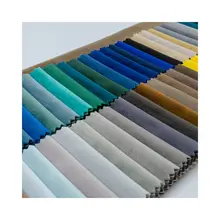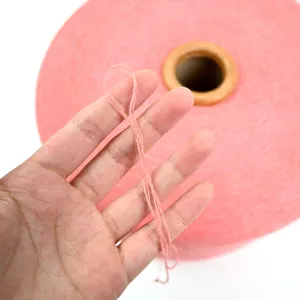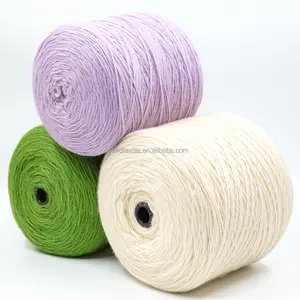Top categories

Leather Products

Yarn

Fiber

Thread

Textile Processing

Textile Accessories

Other Textiles & Leather Products

Leather

Fur

Down & Feather

Fabric
About products and suppliers
Exploring the Versatility of Coned Yarn
Coned yarn is a staple in the textile industry, favored for its efficiency and versatility in various applications. This type of yarn is wound on cones, making it ideal for machine knitting, weaving, and other automated processes. The adaptability of cone yarn for machine knitting has made it a popular choice among manufacturers and artisans alike.
Types and Materials
There is a diverse range of coned yarn materials available to meet the needs of different projects. Cotton yarn cone options are sought after for their softness and breathability, perfect for clothing and home textiles. For those seeking durability and resilience, acrylic yarn on cones is a go-to, while wool yarn cones offer warmth and a luxurious feel. Each material brings its own set of features to the table, catering to a wide array of textile requirements.
Applications and Features
The applications of coned yarn are extensive. In the realm of home crafting, sugar and cream yarn cones are frequently used for their absorbent properties, making them ideal for kitchen and bath items. For larger scale operations, yarn cones wholesale purchases facilitate the production of a vast range of goods, from fashion to furnishings. Features such as flame retardant and anti-pilling properties enhance the functionality of the yarn, broadening its usability.
Coned Yarn in the Textile Industry
In industrial settings, the efficiency of cone winding is paramount. This process prepares the yarn for a seamless integration into textile machinery, reducing downtime and waste. The use of weaving cones and empty yarn cones reflects the industry's move towards sustainability, as these can be reused or recycled, minimizing environmental impact.
Advantages of Using Coned Yarn
One of the primary advantages of coned yarn is its contribution to productivity. With yarn winding cones, the transition from yarn production to fabric creation is streamlined. Additionally, for those utilizing cones of wool for knitting machines, the consistent tension and uninterrupted flow of yarn are invaluable for maintaining quality and efficiency in their knitting projects.
Conclusion
Coned yarn remains a pivotal component in the textile industry, offering a range of materials like cotton yarn in cones and mohair yarn cone to suit various end-uses. Its benefits are clear, from enhancing industrial productivity to providing the crafting community with reliable yarn options. As the industry evolves, coned yarn continues to be at the forefront, adapting to the needs of modern textile production and design.

























 浙公网安备 33010002000092号
浙公网安备 33010002000092号 浙B2-20120091-4
浙B2-20120091-4